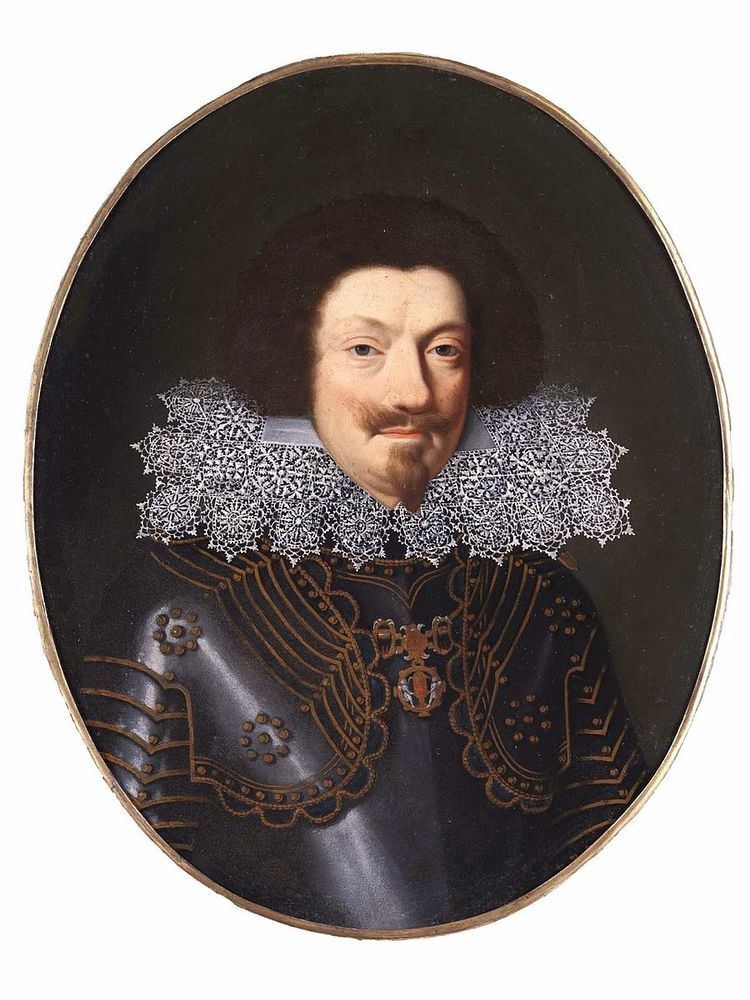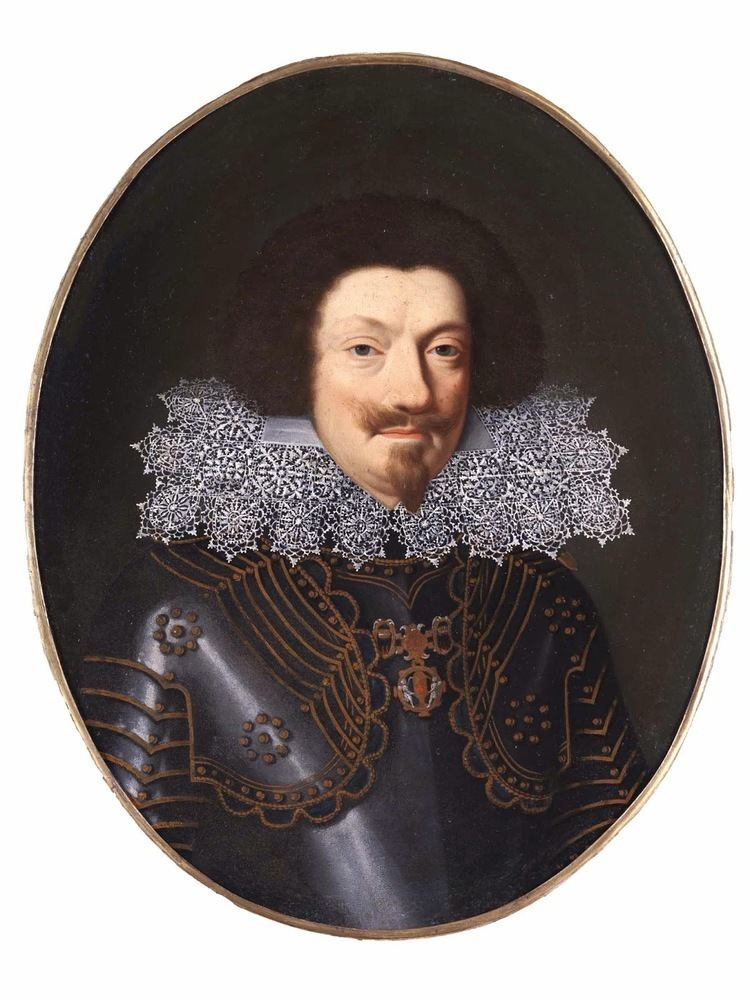Reign 1627 - 1637 Name Charles Duke Spouse Catherine of Lorraine | Successor Charles II Gonzaga Predecessor Vincenzo II Gonzaga | |
 | ||
Died 22 September 1637(1637-09-22) (aged 57)
Mantua Issue
Detail Francis, Duke of Rethel
Charles, Duke of Nevers
Ferdinand, Duke of Mayenne
Marie Louise, Queen of Poland
Anna, Countess Palatine of Simmern | ||
Charles Gonzaga (Italian: Carlo I Gonzaga) (6 May 1580 – 22 September 1637) was Duke of Mantua and Duke of Montferrat from 1627 until his death. He was also Charles III Duke of Nevers and Rethel, as well as Prince of Arche and Charleville
Contents

Biography
Born in Paris, he was the son of Louis Gonzaga, Duke of Nevers and Henriette of Cleves.
In 1600, as duke of Rethel, he founded, in Nevers, the Order of the Yellow Ribbon, soon forbidden by the King, due to its peculiar character.
In 1606, he decided the foundation of Charleville and the Principality of Arches ( fr ) He became 1st Prince of Arche and Charleville
In 1612, Charles, a descendant of the Byzantine Emperor Andronicus II Palaeologus through his grandmother Margaret, who was of the line of Theodore I, Marquess of Montferrat, Andronicus' son. Claimed the throne of Constantinople, at the time the capital of the Ottoman Empire. He began plotting with Greek rebels, including the Maniots of Greece, who addressed him as "King Constantine Palaeologus". When the Ottoman authorities heard about this, they sent an army of 20,000 men and 70 ships to invade Mani. They succeeded in ravaging Mani and imposing taxes on the Maniots. This caused Charles to move more actively for his crusade. He sent envoys to the courts of Europe looking for support. In 1619, he recruited six ships and some five thousand men, but he was forced to abort the mission because of the beginning of the Thirty Years' War.
At the death of the last legitimate male heir of the Gonzaga line in the Duchy of Mantua, Vincenzo II (1627), Charles inherited the title through an agreement. His son was married with Maria Gonzaga, daughter of former Duke Francesco IV.
However, his succession spurred the enmity of Charles Emmanuel I of Savoy, who aimed at the Gonzaga lands of Montferrat, and, above all, of Spain and the Holy Roman Empire, which did not like a philo-French ruler in Mantua. This led to the War of the Mantuan Succession. In 1629 emperor Ferdinand II sent a Landsknecht army to besiege Mantua, Charles left without the promised support from Louis XIII of France. The siege lasted until July 1630, when the city, already struck by a plague, was brutally sacked. Mantua never recovered from this disaster.
The subsequent diplomatic maneuvers allowed Charles, who had fled to the Papal States, to return to the duchy in 1631, although not without concessions to the House of Savoy and to the Gonzaga of Guastalla. The situation of the Mantuan lands was dramatic, but he was able to trigger some economic recovery in the following years.
Charles died in 1637. His successor was his grandson Charles II, initially under the regency of Maria Gonzaga, Charles I's daughter-in-law.
Children
He married Catherine of Mayenne, daughter of Charles of Lorraine, Duke of Mayenne and Henriette of Savoy. They had six children:
